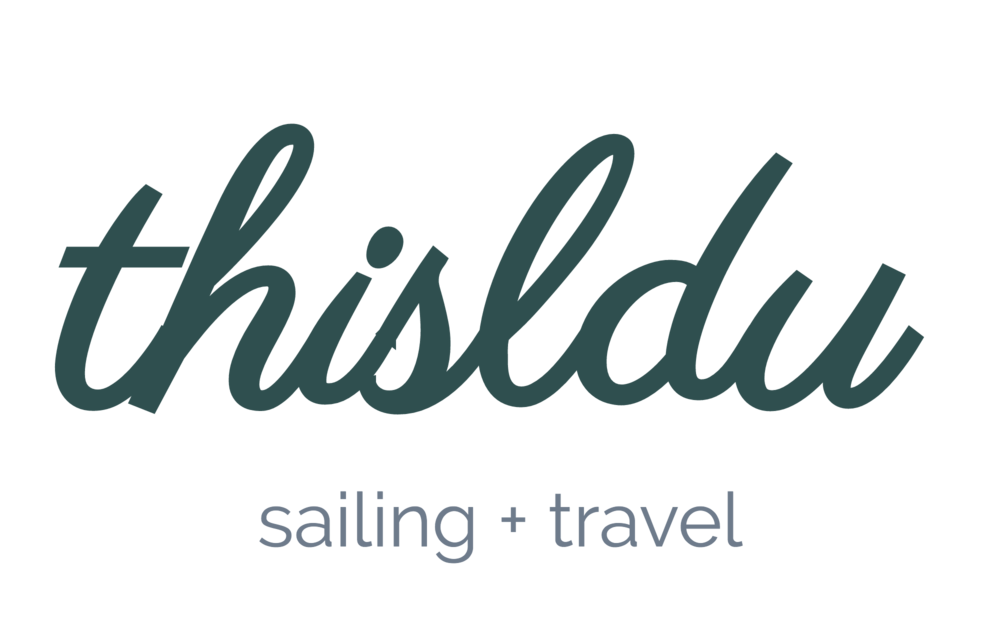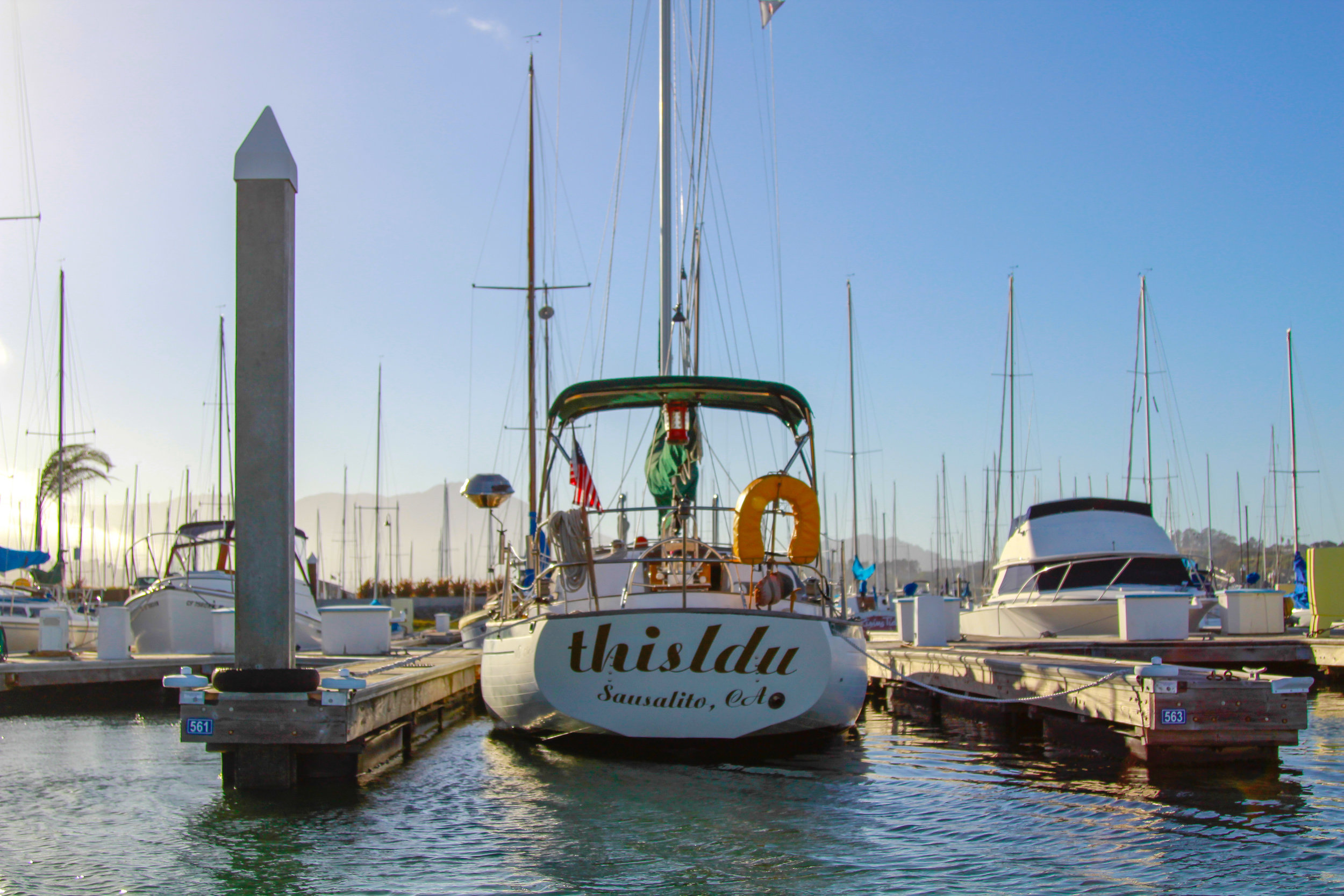“Great things are not done by impulse, but by a series of small things brought together. And great things are not accidental, but must certainly be willed.”—Vincent Van Gogh
If you’re joining us for the first time, I recommend reading Garrett and I Just Our Jobs to Travel and Sail the World and How We Made the Decision to Quit Our Jobs to Travel and Sail the World first.
For those of you returning to the blog, welcome back! And thanks for reading.
I’m here today to share how we learned how to sail and saved to buy a sailboat.
First, we had a life-changing discussion in 2014 about what we thought really mattered. It led us to discover that one of us really wanted to travel (me) and the other really wanted to sail (Garrett). From there we started to formulate a plan: we would save money, buy a sailboat, and take it cruising for as long as we could.
We had a couple of issues that we needed to overcome before embarking on this journey, though. First, we didn’t have any money. And second, we didn’t know how to sail.
We decided to address the latter first.
I touch base on how we first began sailing in my last post, How We Made the Decision to Quit Our Jobs to Travel and Sail the World. In short, Garrett started volunteering with a sailing non-profit and we made fast friends with a sailor named Nick (who, because of the abundance of Nick’s in our lives, I call Nico), someone who was a few years ahead of us in his cruising plans.
In the rainy, stormy spring of 2016 I got my Basic Keelboat I & II certification from OCSC in Berkeley and Garrett got on as many boats as he could. He still volunteered weekly with Blue Water Foundation and we frequently sailed with our friend Nico. My uncle Kieran gifted us an edition of Chapman Piloting & Seamanship and we combed the internet for more resources. At the time, there wasn’t a whole lot of online information about cruising—I think the big Youtube sailing channels like Sailing SV Delos and Sailing La Vagabond were just getting started. We spent a lot of weekends walking the docks of Sausalito and peeking inside of boats that were up for sale. Garrett started dreaming about Tayana 37s and Westsail 32s; at one point we stayed on a Tayana for a weekend through Airbnb. He spent a lot of his days perusing Craigslist and Yachtworld for boats—it’s a miracle that he was able to keep his job.
Actually, when Garrett was interviewing for a promotion, the hiring manager asked, “I heard that you’re planning to buy a sailboat and sail it around the world. So why should we give you this job?”
To which he answered, “Because I need enough money to buy a boat. And if I make enough money to buy a boat, this company makes a lot of money, too.” He was offered the job the next day.
I digress.
In his new role, Garrett started making commission, and we immediately deposited those checks into our newly created travel savings account. I was still worried, though, about the prospect of buying a boat. A lot of the ones we were coming across were $50,000, $70,000, or more, and we didn’t have that money. I desperately did not want to have to finance one and dig ourselves deeper into debt. The whole point of this was to buy a boat so we could go, and not stay behind to work to pay it off.
So we kept looking—Garrett checked out about 30 boats. And one day, Garrett came across the perfect one. It was a make he hadn’t heard of before—a Rafiki 35. A sloop rig designed by Stan Huntingford, only 32 of these were built in Taiwan in the 1970s. Online, it checked a lot of boxes (it had a steering wheel and not a tiller, was pretty ocean-ready, had a full keel, etc.), so we scheduled a meet-up with the gentlemen selling it.
We drove to Sausalito that weekend and met Darryl and Stoner, the two men who had bought the boat brand new in ‘79 and were now selling it because, well, they were getting older and had less and less time for sailing. They poured us wine and told us stories as we sat facing them in the settee, still upholstered in the original brown vinyl from the 70s.
I wasn’t sure about the boat when I looked around. Sure, it looked fine, but was this it? The one? We had looked at so many. Could Garrett and I really live on this 35’ sailboat boat one day? Could we cross oceans with it? And, more pressingly, could we afford it?
Garrett knew instantly that she was the one and scheduled an ocean trial with Daryl for the coming weekend. His intuition was confirmed after that sail, and so we discussed our finances and the next day made them an offer. It was below their asking price, but it was what we could afford. We crossed our fingers and waited for their response.
They accepted our offer. On September 21, 2016, Garrett and I became boat owners.
We popped champagne that night and rejoiced. We were SO MUCH CLOSER to achieving our dream! A dream that we had come up with nearly two years prior and that we were diligently working hard to make happen. It was all starting to come true.
In my next post, I’ll talk about how we came to live on our sailboat and how we saved enough money to be able to quit our jobs to have a go at this full-time travel and sailing lifestyle. Stay tuned!
Before I go, Garrett wanted to share some boat shopping tips for those who are simply dreaming of buying a boat one day or are currently in the market:
Get on as many boats as possible to learn what you like. Make appointments with brokers to see a variety of boats. Learn about their makes, check out their engines, look around the cabin, ask questions. On top of that, try to go sailing on different kinds of boats if you can. Take a look at Latitude 38’s crew list or join a local sailing Facebook group to see if there are any skippers in your area looking for crew. Getting onto different boats will help you identify what you like and don’t like, and what you want for your own.
Try to find a boat that has been used for what you want to do with it. For example, if you want a cruising sailboat, buy a boat that’s been cruising. We didn’t follow this rule exactly; our sailboat had only done a few open water excursions but Garrett felt confident that it was ocean ready. We have, however, made quite a few additions to the boat over the past few years to make us feel extra ready to go cruising, such as installing a dodger and bimini, a stack pack, autopilot, roller furling, and so on. These were costly purchases that we may have been able to save on if they were absorbed in the buying cost of the boat, but maybe not. We’ve had the time to do these projects; if we were more in a rush, it would have been nice to have all of those additions we made already on board.
Always do a sea trial and always do a survey. Make sure you have all of the information available to you so you know you’re not buying a lemon! The survey gives you a professional’s opinion on the boat; it’s easy to become blinded by your own excitement. The sea trial will (or won’t) make you feel confident that the boat handles well in the water.
Go small and go now. Like I mentioned above, I didn’t want to get stuck with some big expensive boat that we would spend years paying off. Nor did we want to end up with a boat that required a lot of work to make it ready to sail. If you want to go cruising, try to set yourself up with a boat that meets your needs in the financial, maintenance, and sailability (that’s not a word, but you get what I mean) departments. Don’t try to tackle something that requires a lot of work or too much money for your budget if you want to cast of the lines quickly.
Follow your gut and don’t settle. There are a lot of boats out there. If you’ve found a boat that seems pretty good but you’re having doubts, you probably shouldn’t buy that boat. Garrett called our friend Nico after finding a boat that he thought might have been the one to ask for his advice. Nico’s two cents? “If you have to be calling me about this boat to ask for a second opinion, it probably isn’t the one. Once you find your boat you will want to do everything in your power to get it.” Garrett followed that advice, and a few months later, we found the perfect one.


